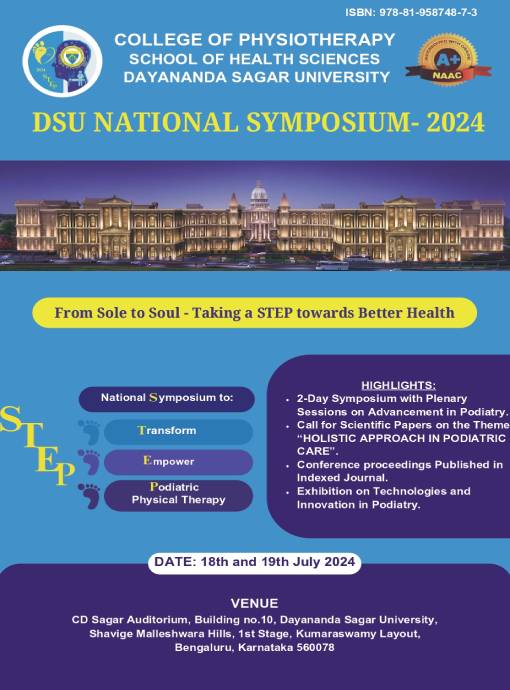Comparing the Effectiveness of Gongs Versus Angular Joint Mobilization of Physical and Functional Outcome Among Frozen Shoulder Patients Using ICF Coreset- A Case Report
DOI:
https://doi.org/10.18311/DSUPHY/9788195874873/2024/028Keywords:
Angular Joint Mobilization; Disability and Health Corset; Frozen Shoulder; Gong’s Mobilization; RPS-form; The International Classification of Functioning (ICF)Abstract
Introduction: Background: Frozen Shoulder (FS) is a painful condition marked by discomfort and stiffness. The affected shoulder’s Range of Motion (ROM), is limited to less than 50% of the opposing shoulder. Gong’s mobilization is an end-range mobilization that helps in improving range and functional impairment. Angular joint mobilization helps in Reducing shoulder pain, increased ROM, and decreased disability. The International Classification of Functioning, Disability and Health (ICF). The ICF Core Sets address the domains and categories relevant to a particular health condition by which it can be utilized systematically to evaluate and document the specific areas of activity limitation and participation restriction experienced by the patient. Aim: The aim of the study is to compare the effectiveness of Gong’s mobilization versus angular joint mobilization in patients with frozen shoulders on physical and functional outcomes using an ICF corset. Methodology: Two patients diagnosed with frozen shoulder stage 2 who meet the inclusion were assessed with the baseline outcome measurement of NPRS, PENN shoulder scale, ROM, and UEFS by using an ICF corset, One patient was treated with Gongs technique, and one with Angular joint mobilization for 2 weeks. The rehabilitation protocol was designed using the Rehabilitation problem-solving form (RPS-Form). Result: The patient who received AJM showed positive improvement in pain, ROM, functional activity and disability than Gongs mobilization after 2 weeks. Conclusion: This study showed significant improvement in pain, ROM, functional activity and disability using an ICF corset and rehabilitation problem-solving form for 2 weeks.
 Sowbhagya K. P.
Sowbhagya K. P.
